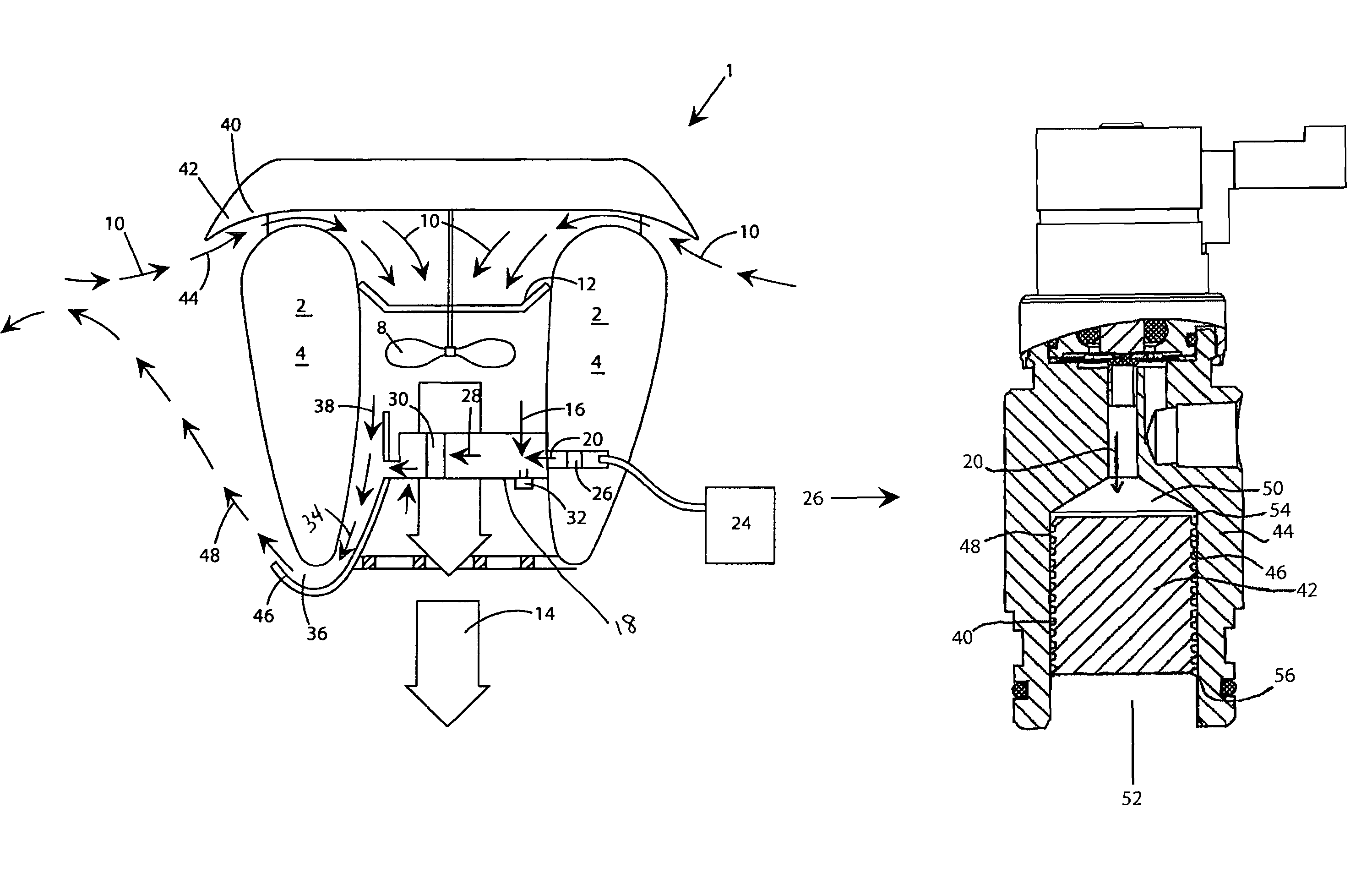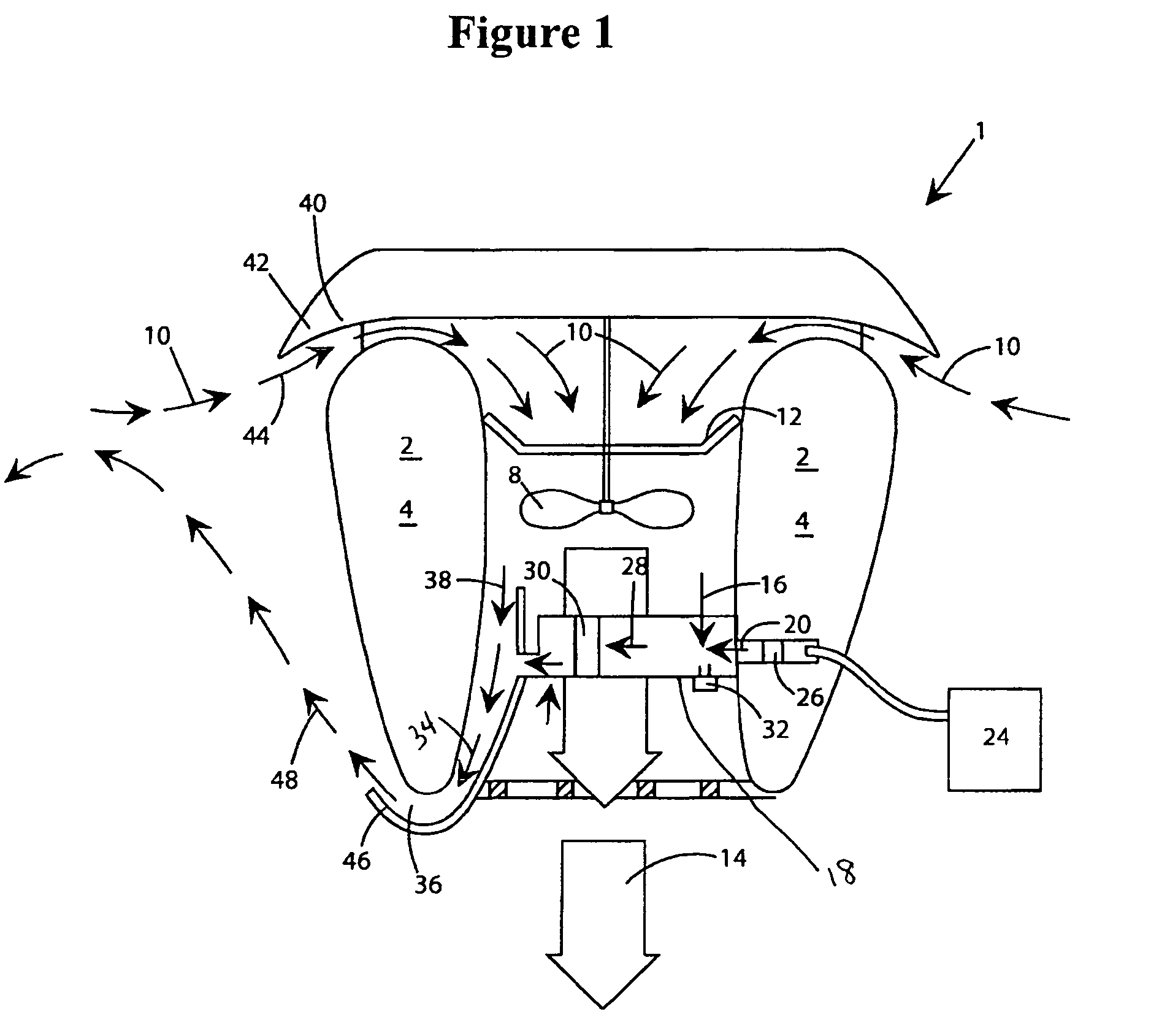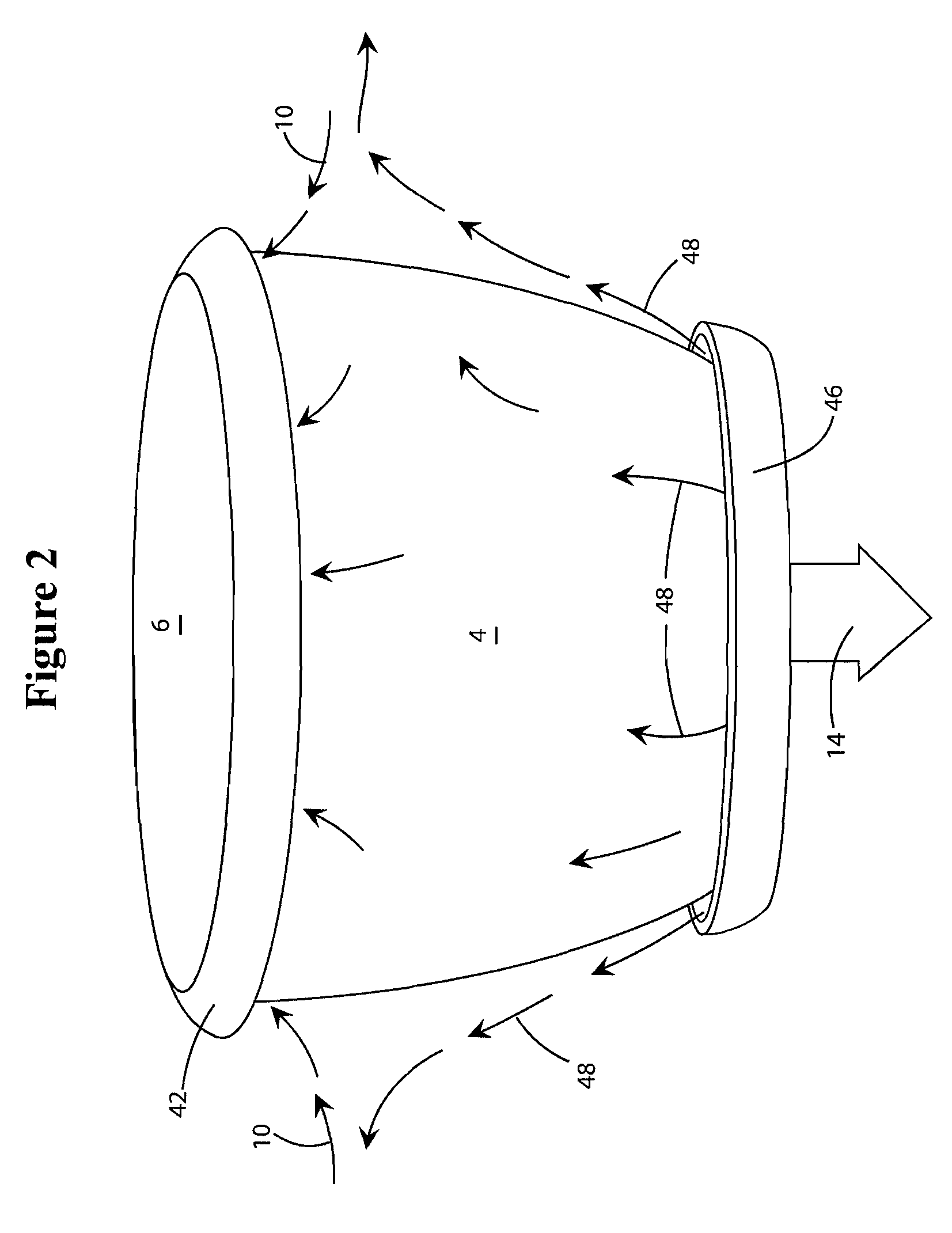Insect lure trap with flow restrictor
a technology of flow restrictor and insect trap, which is applied in the direction of insect traps, instruments, process and machine control, etc., can solve the problems of poor reliability of diaphragm regulator, high cost, and very low pressure of insect traps, so as to reduce the pressure, reduce the pressure, and reduce the effect of pressur
- Summary
- Abstract
- Description
- Claims
- Application Information
AI Technical Summary
Benefits of technology
Problems solved by technology
Method used
Image
Examples
Embodiment Construction
FIGS. 1 and 2 show an insect trap 1 incorporating an embodiment of a flow restrictor according to the present invention. The trap 1 includes a housing 2 formed of sidewalls 4 and a top 6. Within housing 2 is a suction device 8. The suction device 8 can be a rotational unit that is driven by a motor or an engine. For example, the suction device 8 can be a blower or a fan. The suction device 8 is shown diagrammatically in FIG. 1 as two rotor blades. The object of suction device 8 is to draw air through the CO2 trap 1 and any known method for doing so can be used.
Intake air 10 is pulled into the trap 1 at the top of the housing by suction device 8. Along with the intake air 10, insects are sucked into the trap. Once within the housing 2, the intake air 10 passes through a catch 12 wherein the insects contained in the air stream are captured. After passing through the suction device 8, or blower, the air is separated for various uses. Much of the air passes directly through trap 1 as wa...
PUM
 Login to View More
Login to View More Abstract
Description
Claims
Application Information
 Login to View More
Login to View More - R&D
- Intellectual Property
- Life Sciences
- Materials
- Tech Scout
- Unparalleled Data Quality
- Higher Quality Content
- 60% Fewer Hallucinations
Browse by: Latest US Patents, China's latest patents, Technical Efficacy Thesaurus, Application Domain, Technology Topic, Popular Technical Reports.
© 2025 PatSnap. All rights reserved.Legal|Privacy policy|Modern Slavery Act Transparency Statement|Sitemap|About US| Contact US: help@patsnap.com



